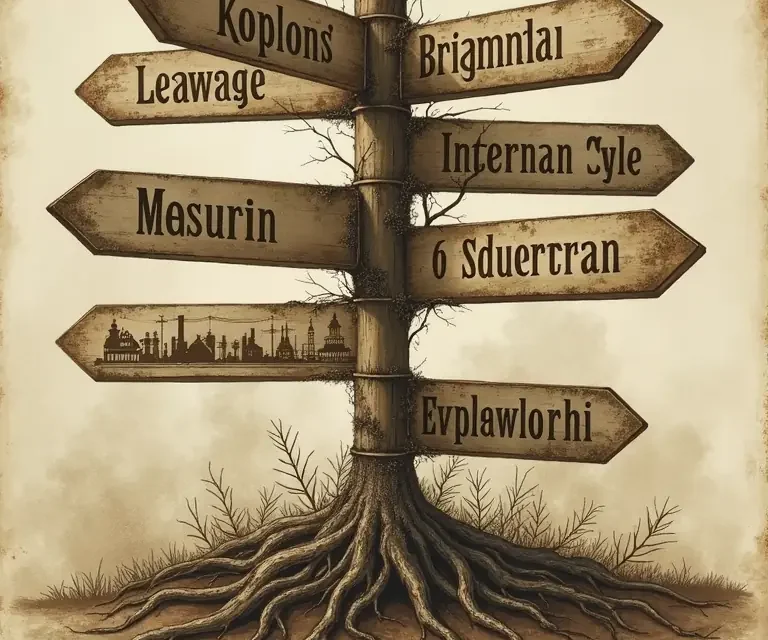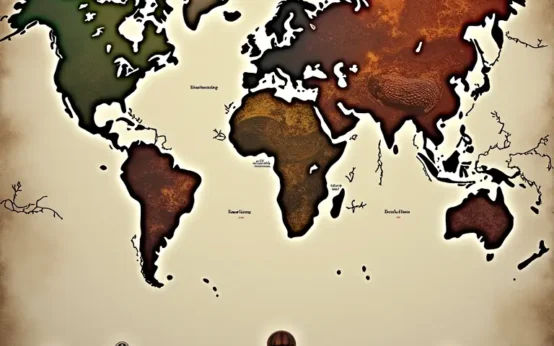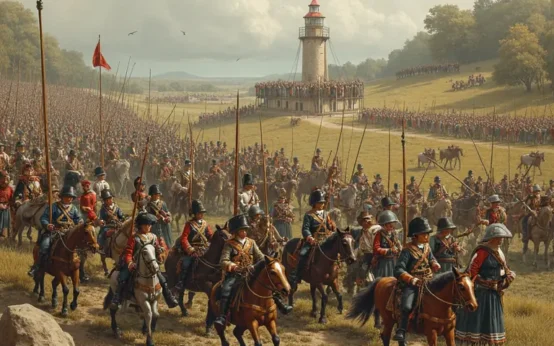We walk them every day, drive along them, rely on them for navigation – streets. They’re such a fundamental part of our lives, yet how often do we stop to consider why they’re named what they are? Beyond simply providing addresses, street names are often silent storytellers, preserving fragments of local history, honoring significant figures, reflecting past landscapes, or even hinting at the aspirations of those who first laid them out. This article will delve into the fascinating world of street naming, exploring the diverse origins, hidden meanings, and surprising stories embedded within the fabric of our towns and cities. Prepare to see your everyday commute with a new perspective!
A Walk Through Time: The Evolution of Street Naming
The practice of naming streets is almost as old as cities themselves. In ancient Rome, streets were often named after the destinations they led to – the Via Appia, for example, led to the Appian Way. Early medieval towns were less organized, and street names were often descriptive, based on the trades practiced there (e.g., Smith Street, Baker Street) or the physical characteristics of the area (e.g., Long Lane, Muddy Alley). These practical names offered vital information in an age before standardized addresses.
The naming conventions began to shift significantly with the rise of planned cities and the Victorian era. The Victorian period, in particular, saw a surge in the commemoration of historical figures – royalty, military heroes, and prominent politicians were frequently honored with street names. This wasn’t always about genuine admiration; sometimes it was a strategic move to curry favor or to project a particular image of the city. The growth of suburbs also led to a proliferation of names inspired by nature – Oak Avenue, Rose Lane, Willow Drive – reflecting a romantic ideal of rural life.
The 20th and 21st centuries have seen a more diverse range of influences, from literary figures and artists to local landmarks and even, occasionally, the developers themselves! Modern naming practices are often subject to local regulations and historical preservation guidelines.
Categories of Street Names: A Deep Dive
Commemorative Names: Honoring the Past
Perhaps the most common type of street name, commemorative names are dedicated to individuals who have made a significant contribution to society. These can include:
- Political Figures: Washington Street, Lincoln Avenue, Kennedy Boulevard are ubiquitous across the United States, honoring presidents and other prominent politicians.
- Military Heroes: Veterans and those who died in service are often remembered through street names like Patton Drive or Eisenhower Road.
- Local Heroes: Many towns and cities honor local figures – founders, philanthropists, artists, and educators – with street names, preserving their legacy within the community.
- Historical Figures: Streets might be named after figures from further back in history, like Shakespeare Lane or Newton Place.
It’s important to note that the choice of whom to commemorate can be subject to debate and revision. In recent years, there’s been a growing movement to reassess street names honoring figures with problematic legacies, particularly those associated with slavery or colonialism.
Descriptive Names: Reflecting the Landscape and Environment
Before formal mapping and addressing systems, descriptive names were crucial for identifying locations. These names often related to the physical environment:
- Topographical Features: Hill Street, Valley Road, Riverview Drive, and Cliffside Avenue all clearly indicate the surrounding geography.
- Vegetation: Oak Street, Pine Avenue, Maple Drive, and Rose Lane are common examples, reflecting the trees and plants prevalent in the area.
- Land Use: Mill Street, Market Street, and Factory Lane often indicate the historical function of the area.
- Soil/Ground Conditions: Sandy Lane, Gravel Pit Road, Claymore Drive, can offer clues to the geological composition of the area.
Sometimes, these names are ironic. A “Green Street” might be surrounded by concrete, or a “Riverview Drive” might no longer offer a view of the river due to development.
Directional Names: Navigating the City
Directional names are straightforward and indicate the direction a street runs in relation to a central point or other streets:
- North Street, South Street, East Street, West Street: These are incredibly common, particularly in grid-based city layouts.
- First Street, Second Street, Third Street: Often used in planned communities or older cities with a grid system.
These names are practical but rarely offer much in the way of historical insight.
Literary and Mythological Names: A Touch of Culture
Streets are sometimes named after characters from literature, mythology, or folklore. This practice adds a layer of cultural richness to the urban landscape:
- Shakespeare Streets: Hamlet Place, Macbeth Avenue, Othello Street.
- Greek Mythology: Olympus Drive, Apollo Street, Athena Lane.
- Literary Figures: Dickens Street, Austen Road, Brontë Way.
These names often reflect the educational background or literary tastes of the city planners or developers.
Unique and Quirky Names: Standing Out from the Crowd
Occasionally, you’ll encounter street names that are simply… unusual. These might be based on local anecdotes, inside jokes, or the whims of the developers. They offer a glimpse into the personality of the community.
Hidden Meanings and Lost Histories
The real magic of street names lies in the hidden stories they conceal. Researching the origins of a street name can reveal surprising and fascinating details about a community’s past. For example, a street named “Indian Trail” might indicate the presence of a Native American path that predates European settlement. A street named “Orphanage Lane” could mark the site of a former charitable institution.
Sometimes, the meaning of a name is lost over time. Old maps and local historical societies are invaluable resources for uncovering these forgotten stories. The names themselves can also be clues – archaic spellings or unusual phrasing can indicate a historical origin that’s no longer obvious.
Consider the power of etymology. Understanding the root of a word can unlock a street name’s meaning. For instance, a street called “Vineyard Lane” doesn’t necessarily mean there’s a vineyard there now, but suggests a historical agricultural practice.
The Politics of Street Naming
Street naming isn’t always a straightforward process. It’s often subject to local politics, community debates, and historical sensitivities. There are several common controversies:
- Honoring Controversial Figures: As mentioned earlier, naming streets after individuals with problematic pasts is increasingly scrutinized.
- Duplicate Names: Avoiding confusion requires careful consideration of existing street names within a city or region.
- Developer Influence: Developers sometimes push for street names that reflect their own branding or preferences.
- Community Input: Balancing the desires of residents with the broader historical context can be challenging.
Many cities now have formal street naming committees that oversee the process, ensuring that names are appropriate, respectful, and reflect the community’s values.
Street Names Around the World: A Global Perspective
Street naming conventions vary significantly across cultures. In some countries, street names are primarily functional, focusing on direction or proximity to landmarks. In others, they are heavily influenced by religious figures or historical events.
For example, in many Spanish-speaking countries, streets are often named after saints or religious holidays. In France, streets are frequently named after prominent writers and artists. In Japan, street names are often numerical, making navigation more efficient. Exploring street names in different parts of the world offers a fascinating glimpse into their unique cultural histories.
Resources for Street Name Research
- Local Historical Societies: A wealth of information on local street names and their origins.
- City Planning Departments: Often maintain records of street naming decisions.
- Old Maps: Sanborn maps and other historical maps can reveal the evolution of street names over time.
- Online Street Name Databases: Several websites and databases compile information on street names.
- Local Libraries: Local history collections can provide valuable insights.
Beyond the Pavement: Seeing the Story
Street names are more than just markers of location; they are windows into the past. By taking the time to investigate their origins, we can gain a deeper understanding of the history, culture, and values of our communities. Next time you’re walking or driving down a street, pause for a moment and consider the story it might be telling. You might be surprised by what you discover.
Want to explore other hidden patterns? Check out the hidden mathematics in everyday objects or delve into unexplained phenomena in the night sky. For a taste of history’s quirks, read about historical hoaxes or the unexpected origins of common foods. And don’t forget to consider the science of color around us!


 The Curious Acoustics of Historical Echo Chambers: Resonance, Ritual, and Revelation
The Curious Acoustics of Historical Echo Chambers: Resonance, Ritual, and Revelation  The Curious Cartography of Scent: Mapping Perfume Ingredients Through History
The Curious Cartography of Scent: Mapping Perfume Ingredients Through History  The Curious Lexicon of Lost Trades
The Curious Lexicon of Lost Trades  The Surprisingly Consistent Science of Historical Ice Harvesting – A Frozen History of Commerce & Preservation
The Surprisingly Consistent Science of Historical Ice Harvesting – A Frozen History of Commerce & Preservation  The Unexpectedly Consistent Science of Historical Buttonhooks – Fashion, Function & Forgotten Tools
The Unexpectedly Consistent Science of Historical Buttonhooks – Fashion, Function & Forgotten Tools  The Surprisingly Consistent Science of Historical Toy Soldiers – Miniature Warfare, Materials & Collective Play
The Surprisingly Consistent Science of Historical Toy Soldiers – Miniature Warfare, Materials & Collective Play